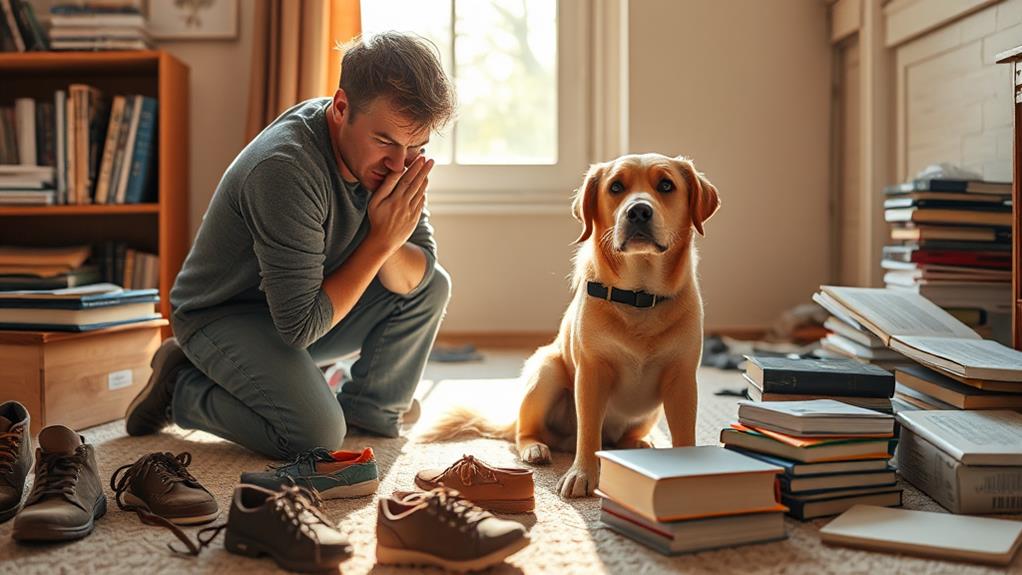When training your dog, avoid essential mistakes that can stall progress. Don't mix up commands; keep them consistent to prevent confusion. Start socialization early and expose your dog to different people and environments. Relying too much on negative reinforcement can backfire, so balance it with positive methods. Remember, basic commands like "sit" and "stay" are foundational for a well-behaved dog. Pay attention to your dog's body language; it's key to effective communication. Finally, don't skip training sessions or set unrealistic goals. Each small success leads to a better bond and understanding, and there's even more to discover beyond this!
Inconsistency in Commands
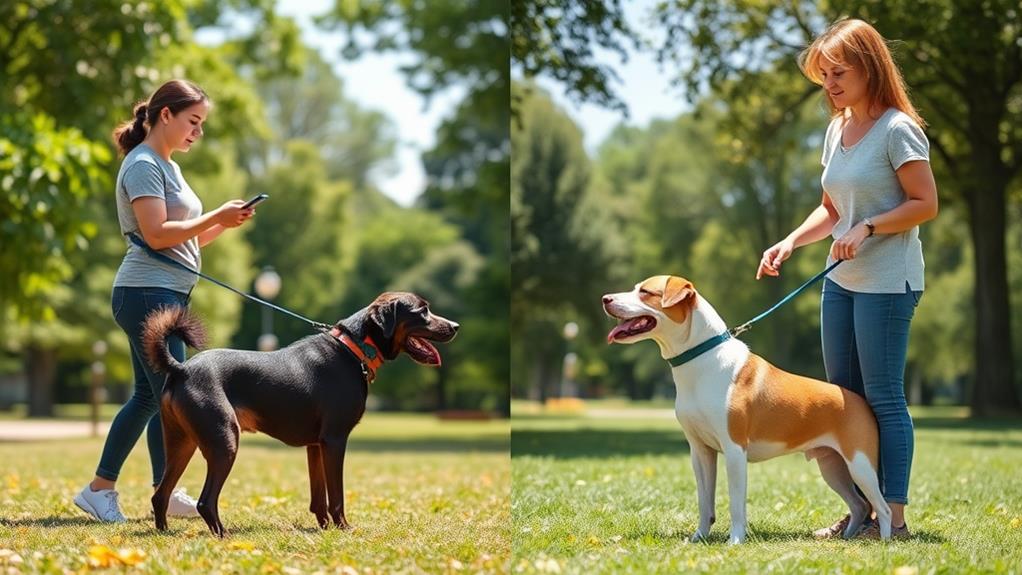
Many dog owners unknowingly contribute to their pets' confusion by being inconsistent with commands. You might say "sit" one day, then use "down" the next for the same action, leaving your dog puzzled. This inconsistency can lead to frustration for both you and your pet, as dogs learn best through repetition and clarity.
To establish a strong communication foundation, pick specific commands and stick with them. If you decide to use "come" instead of "here," make sure everyone in your household uses the same word. Consistency isn't just about the words you choose; it also involves your tone of voice and body language. If you use an upbeat tone on some occasions and a stern one on others, your dog won't know what to expect.
Additionally, practice commands regularly to reinforce them. When your dog understands what you want, you'll see better behavior and a stronger bond. Remember, training is a partnership, so be patient with your dog as they learn. By being consistent with your commands, you're setting the stage for effective communication and a happier, more well-behaved companion.
Neglecting Socialization
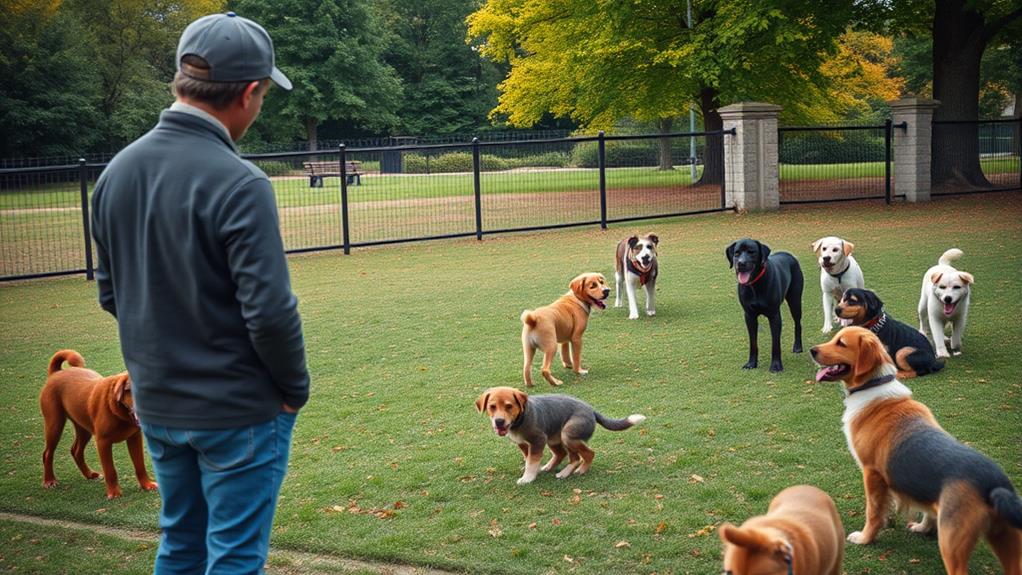
Socialization is an essential aspect of your dog's training that often gets overlooked. It's pivotal for helping your dog feel comfortable in various environments and situations. When you neglect socialization, you risk raising a fearful or aggressive dog, which can lead to behavioral issues down the line.
Start socializing your dog early, ideally during the critical period of 3 to 14 weeks. Introduce them to different people, dogs, and other animals. Take them to parks, pet stores, and even busy streets. The more experiences they have, the more confident they'll become.
Don't just focus on positive experiences; balance it out with exposure to various sounds, sights, and smells. This helps your dog learn to cope with the unfamiliar. Remember, socialization isn't a one-time event; it's an ongoing process.
Keep in mind that each dog is unique, so go at your dog's pace. If they seem overwhelmed, take a step back and try again later. By prioritizing socialization, you'll set your dog up for a happier and more well-adjusted life. Don't underestimate its significance in your training journey!
Using Negative Reinforcement
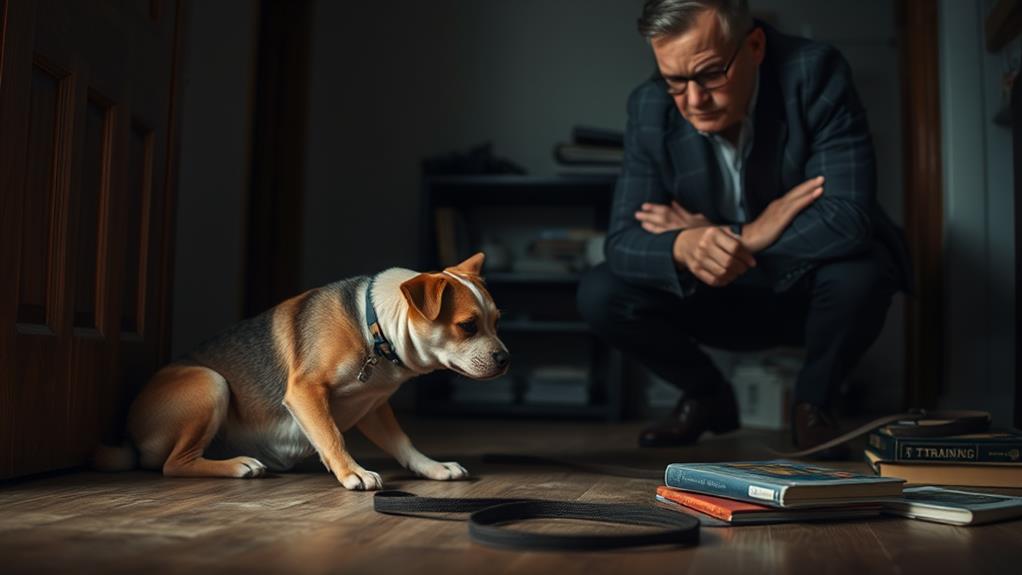
Negative reinforcement can be a useful tool in dog training when applied correctly. It involves removing an unpleasant stimulus to increase a desired behavior. For example, if your dog pulls on the leash and you stop walking until they return to your side, you're using negative reinforcement. Once they comply, the unpleasantness of being stationary disappears, encouraging them to walk beside you in the future.
However, it's pivotal not to confuse negative reinforcement with punishment. Punishment can create fear or anxiety, making training less effective and damaging your relationship with your dog. Instead, focus on using negative reinforcement to guide your dog toward positive behaviors.
Ensure you're consistent in your approach. If you occasionally reward disobedience or don't follow through with the removal of the unpleasant stimulus, your dog may become confused and frustrated. It's also essential to balance negative reinforcement with positive reinforcement, which involves rewarding good behaviors. This combination helps foster a trusting and cooperative environment.
Overlooking Basic Obedience
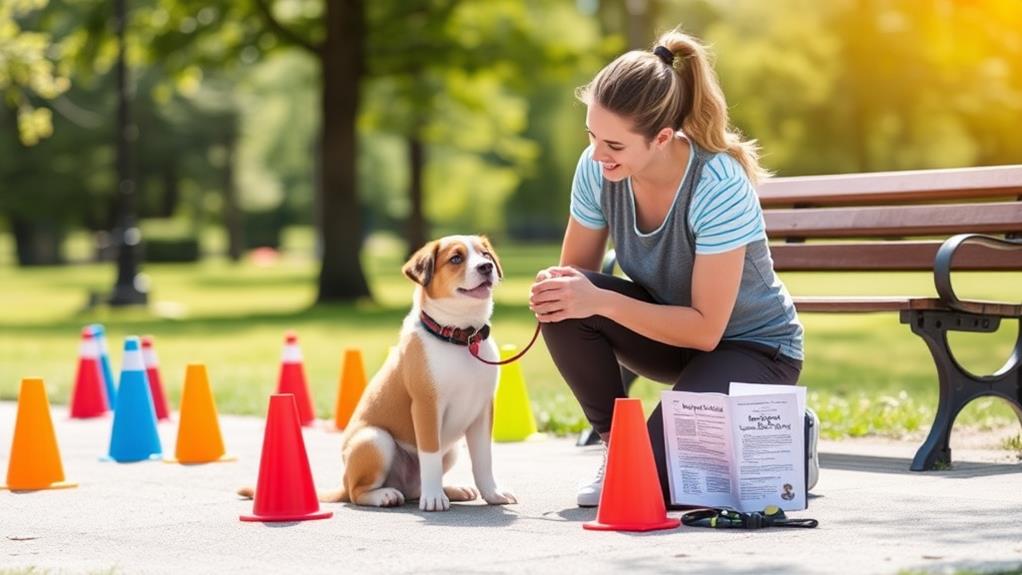
Basic obedience lays the foundation for a well-behaved dog, yet it's often overlooked in training routines. You might think your dog can skip basic commands like "sit," "stay," and "come," but these skills are essential for effective communication. Without them, your dog may struggle to understand your expectations, leading to frustration for both of you.
To help you focus on basic obedience, here's a simple table outlining key commands and their importance:
| Command | Purpose | Benefit |
|---|---|---|
| Sit | Helps your dog settle down | Promotes calm behavior |
| Stay | Teaches impulse control | Keeps your dog safe |
| Come | Encourages recall | Strengthens your bond |
Ignoring Your Dog's Body Language

Understanding your dog's body language is crucial for effective communication and training. Your dog communicates its feelings and intentions through physical cues, like tail wagging, ear positioning, and facial expressions. When you ignore these signals, you miss out on essential information about your dog's emotional state.
For instance, a wagging tail doesn't always mean your dog is happy. If the tail is held high and wagging quickly, it may indicate excitement, but if the tail is low and wagging slowly, your dog might be anxious. Similarly, raised hackles can signal that your dog feels threatened. By recognizing these signals, you can respond appropriately and adjust your training methods.
Ignoring your dog's body language can lead to misunderstandings, increasing stress for both you and your pet. This can result in behavioral issues or hinder your training progress. Pay close attention to how your dog reacts in various situations, and use this insight to guide your training approach. Make it a habit to observe your dog's cues, and you'll foster a stronger bond while enhancing your dog's learning experience. Remember, effective training is built on clear communication and understanding.
Skipping Regular Training Sessions
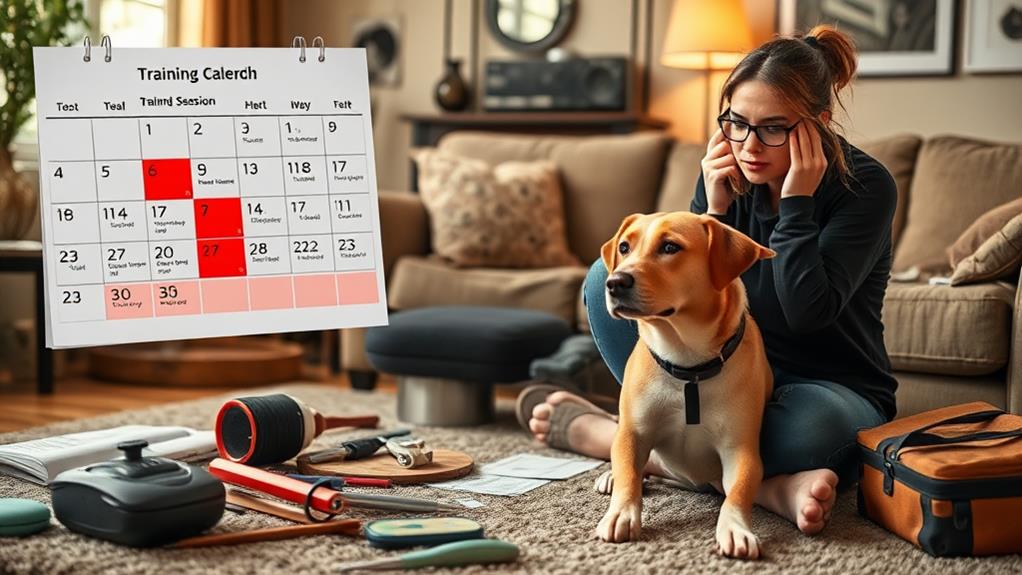
Consistent training sessions are essential for your dog's development and behavior. When you skip these sessions, you risk hindering your furry friend's learning and progress. Dogs thrive on routine, and regular training helps reinforce commands and behaviors. If you let too much time slip by between sessions, your dog may forget what they've learned, leading to frustration for both of you.
Additionally, skipping training can result in bad habits forming. Without consistent reinforcement, your dog might revert to undesirable behaviors you've been working hard to correct. This inconsistency can confuse them, making it harder for you to establish a strong bond built on trust and communication.
Failing to Set Realistic Goals
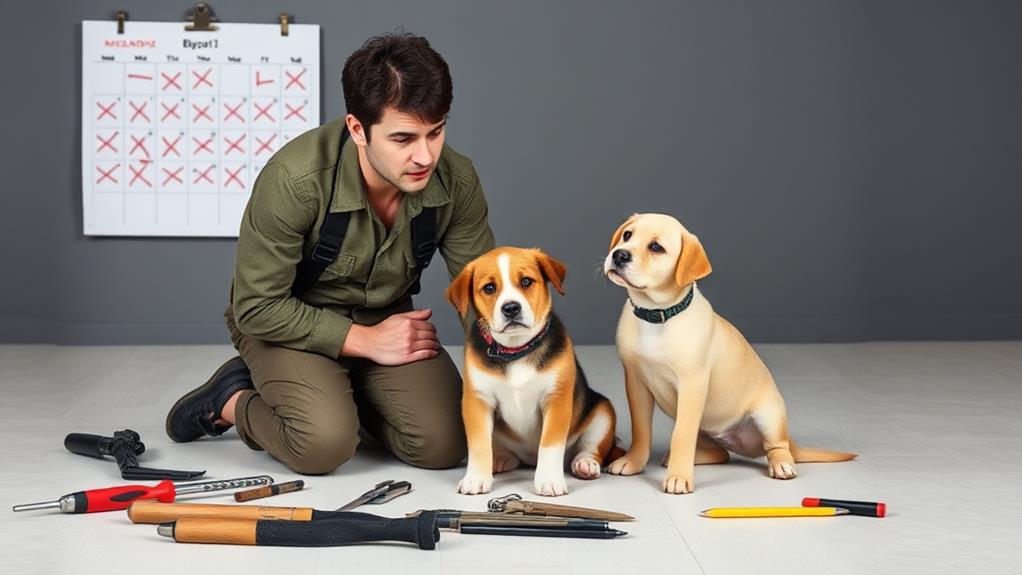
Skipping regular training sessions can lead to a lack of direction, making it even more crucial to set realistic goals for your dog's training journey. When you aim too high or expect too much too soon, you risk frustration for both you and your dog. It's vital to break down your training objectives into manageable, achievable steps.
Start by evaluating your dog's current skills and behavior. If they're a puppy, your focus might be on basic commands like "sit" and "stay." For an older dog, you might want to work on leash manners or socialization with other pets. Setting small, incremental goals allows you to celebrate progress, boosting your dog's confidence and reinforcing positive behavior.
Frequently Asked Questions
How Long Should Training Sessions Last for Best Results?
Training sessions should last about 5 to 15 minutes for the best results. This keeps your dog engaged and focused. You'll find shorter, frequent sessions yield better retention and progress than longer, infrequent ones.
What Age Is Ideal for Starting Dog Training?
Imagine a flower blooming; that's your puppy's potential. Start training around eight weeks old for the best results. Early experiences shape behavior, so seize this moment to nurture their growth and strengthen your bond.
Can I Train My Dog Without Professional Help?
Absolutely, you can train your dog without professional help! With patience, consistency, and positive reinforcement, you'll build a strong bond. Just remember to stay persistent and adapt your methods to suit your dog's personality and needs.
What Are the Best Rewards for Positive Reinforcement?
The best rewards for positive reinforcement include treats, praise, and playtime. You'll find that using your dog's favorite snacks or toys can motivate them, making training sessions enjoyable and effective for both of you.
How Can I Tell if My Dog Is Bored During Training?
You might think your dog's just being stubborn, but boredom often shows up as distraction or disinterest. Watch for signs like yawning or looking away; it's time to switch things up to keep training engaging!
Conclusion
Training your dog can be a rewarding journey, but avoiding these vital mistakes is essential for success. Remember, dogs thrive on consistency, socialization, and understanding. Notably, research shows that positive reinforcement not only builds trust but also enhances your dog's learning capacity. By setting realistic goals and paying attention to your pup's body language, you'll create a more effective training experience. So, stay committed, enjoy the process, and watch your bond grow stronger every day!

